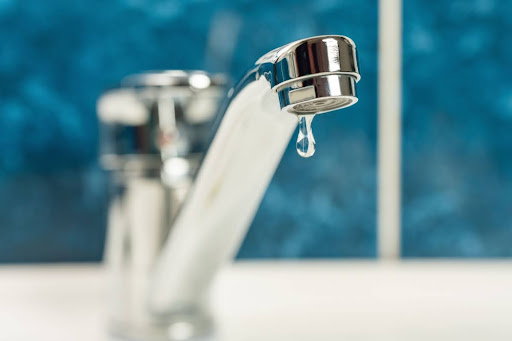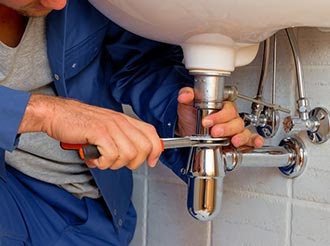
Leaky faucets often seem harmless at first. The occasional drip lands in the sink, barely noticeable, blending into daily life. That constant trickle might feel like a minor inconvenience, but over time, bigger issues start surfacing. Plumbing problems, however, rarely stay small, and something as simple as a dripping faucet can escalate into expensive repairs.
S and J Plumbing has seen firsthand how a leaking tap leads to skyrocketing utility bills, water stains creeping along walls, and damaged faucet components. Instead of waiting for the issue to spiral out of control, addressing the problem early keeps the plumbing system in perfect condition.
We'll explain why letting that leaking tap continue its relentless dripping could lead to serious consequences for your home and wallet. Plus, we'll share troubleshooting tips and signs it's time to call in our crew for help.
1. High Water Bills
Each drop escaping from a leaking tap adds to the monthly water bill. Over time, gallons of water disappear, increasing household expenses. The impact might go unnoticed until the next bill arrives, revealing unexpected costs.
A plumbing system that’s constantly feeding a dripping faucet will keep the meter running, even when the tap isn’t fully open. Slow leaks quietly waste water, while faster drips escalate the problem. The longer it continues, the more money drains away.
2. Potential Water Damage
If left unchecked, your leaking tap could transform into a home disaster. Water stains on ceilings and walls serve as warning signs of hidden damage occurring behind your surfaces. The constant moisture creates perfect conditions for structural weakening, which might eventually require extensive repairs.
The scariest part? Your dripping faucet could suddenly escalate into a burst pipe scenario. Think about the devastating impact of water flooding your beautiful home — ruined furniture, damaged possessions, and thousands in repairs. Taking action now prevents these nightmarish situations.
3. Pipe and Fixture Deterioration
Your plumbing system faces ongoing stress from that persistent drip. The continuous water flow erodes your valve seat and damages other faucet components over time. This deterioration spreads throughout connected pipes, leading to system-wide issues.
The problem compounds when mineral deposits accumulate around the leak. These deposits accelerate wear and tear on O-rings and other vital parts. What started as a simple fix transforms into major tap repairs involving multiple components.
4. Mold and Mildew Growth
Moisture creates the perfect environment for mold and mildew. A dripping faucet increases humidity levels in bathrooms, kitchens, and laundry rooms, allowing these unwelcome intruders to thrive. Once mold settles in, it spreads quickly, creating an unhealthy environment for the entire household.
Mold spores trigger allergies, aggravate respiratory conditions, and cause unpleasant odors. The longer the moisture lingers, the worse the problem becomes. Mold remediation requires professional intervention, making it an expensive consequence of ignoring a small leak.
5. Annoying Noise and Reduced Water Pressure
That constant dripping noise disrupts sleep, interrupts quiet moments, and becomes a never-ending frustration. Homeowners often underestimate how annoying a leaky faucet can be until they experience the relentless sound echoing through the house.
Beyond the noise, leaks contribute to water pressure issues. A dripping faucet indicates an imbalance in the plumbing system, often pointing to problems within the pipes. Reduced water pressure affects showers, dishwashing, and other daily activities, turning simple tasks into frustrating experiences.
Troubleshooting Tips for a Dripping Faucet
Before calling a plumber, some quick troubleshooting steps might reveal the root cause of the problem:
- Check the Faucet Components: Worn-out washers, damaged O-rings, or a faulty valve seat often cause leaks. Replacing these small parts sometimes resolves the issue.
- Inspect the Water Pressure: High water pressure forces water through seals and gaskets, causing persistent dripping. If pressure seems too strong, a regulator might help.
- Look for Mineral Buildup: Hard water leaves behind deposits that clog openings and interfere with proper water flow. Cleaning aerators and faucet components often improves performance.
- Examine Nearby Pipes: A leaky pipe under the sink might be contributing to the issue. If water pools around connections, tightening fittings or replacing worn-out sections could potentially help.
When to Reach Out to a Professional Plumber
DIY fixes work in some cases, but persistent leaks often require professional attention. If a dripping faucet refuses to stop despite basic troubleshooting, deeper plumbing issues might be at play.
Plumbers have the tools and expertise to diagnose hidden problems, from deteriorating valve seats to unseen pipe damage. Water leaks sometimes indicate larger plumbing concerns, including corroded pipes, faulty shut-off valves, or improper installation. Professional repairs address these issues before they escalate into major expenses.
Have a Dripping Faucet That Won’t Stop? Call S and J Plumbing Today!
Leaky faucets waste water, increase bills, and lead to long-term damage. Instead of ignoring the problem, taking action early prevents unnecessary repairs and keeps plumbing systems functioning properly.
S and J Plumbing specializes in tap repairs, pipe maintenance, and comprehensive plumbing solutions. Whether it’s a simple fix or a larger plumbing concern, our team is ready to help.
Call today to schedule an appointment in Arlington Heights, IL, or one of the surrounding areas, and stop that drip before it turns into a bigger problem! We offer a range of plumbing, sewer line, and drain services, so be assured that we can provide a solution for any issue.




